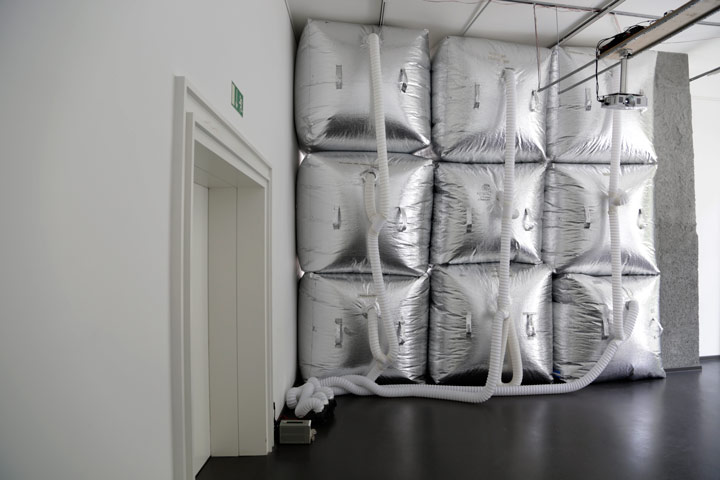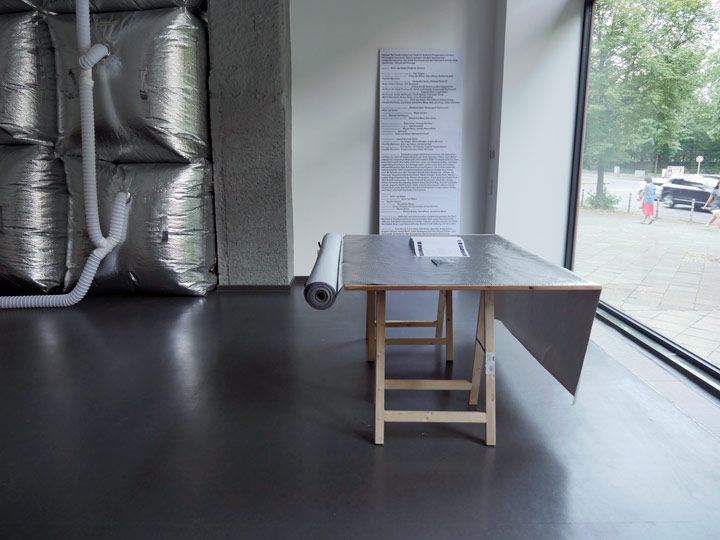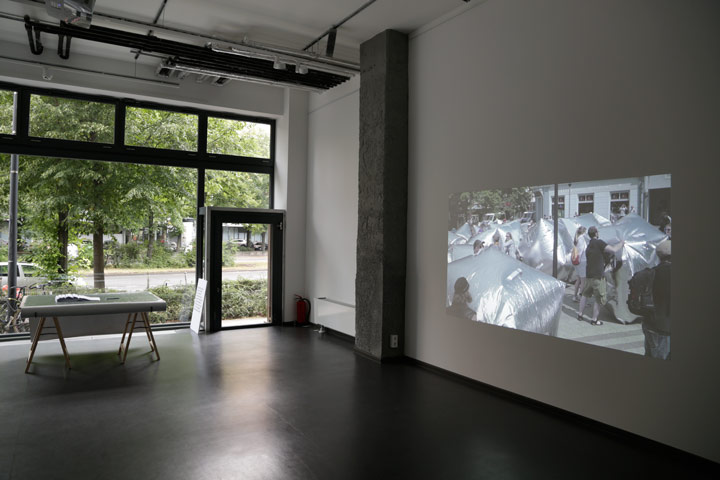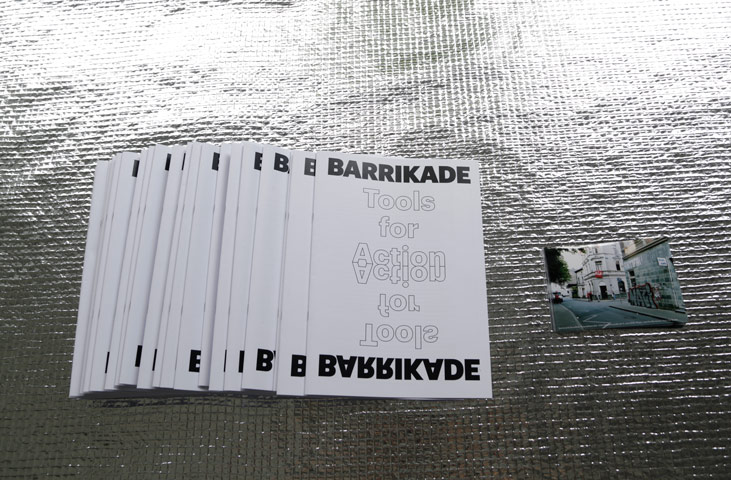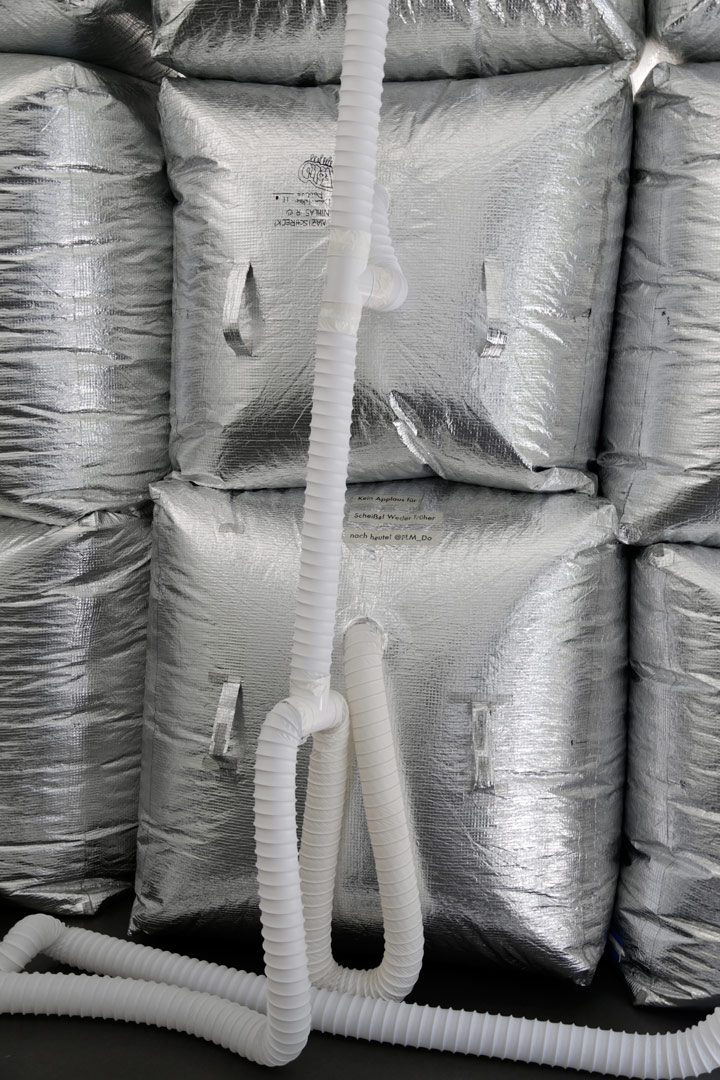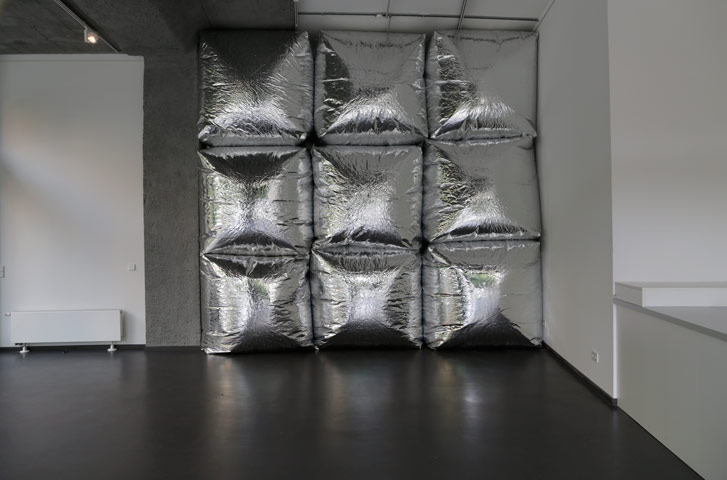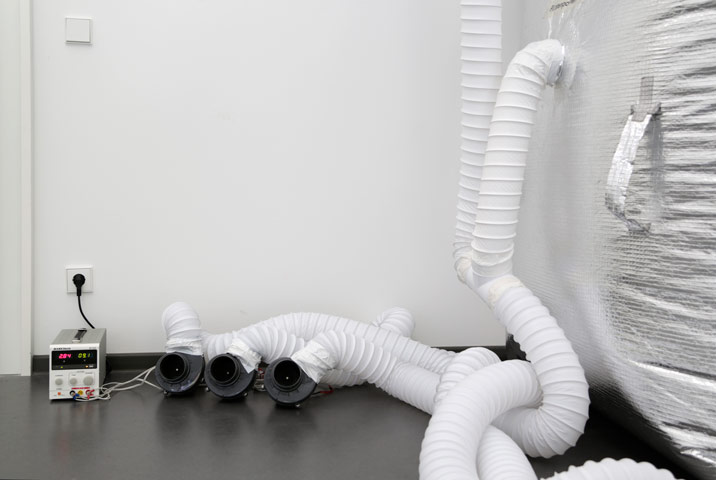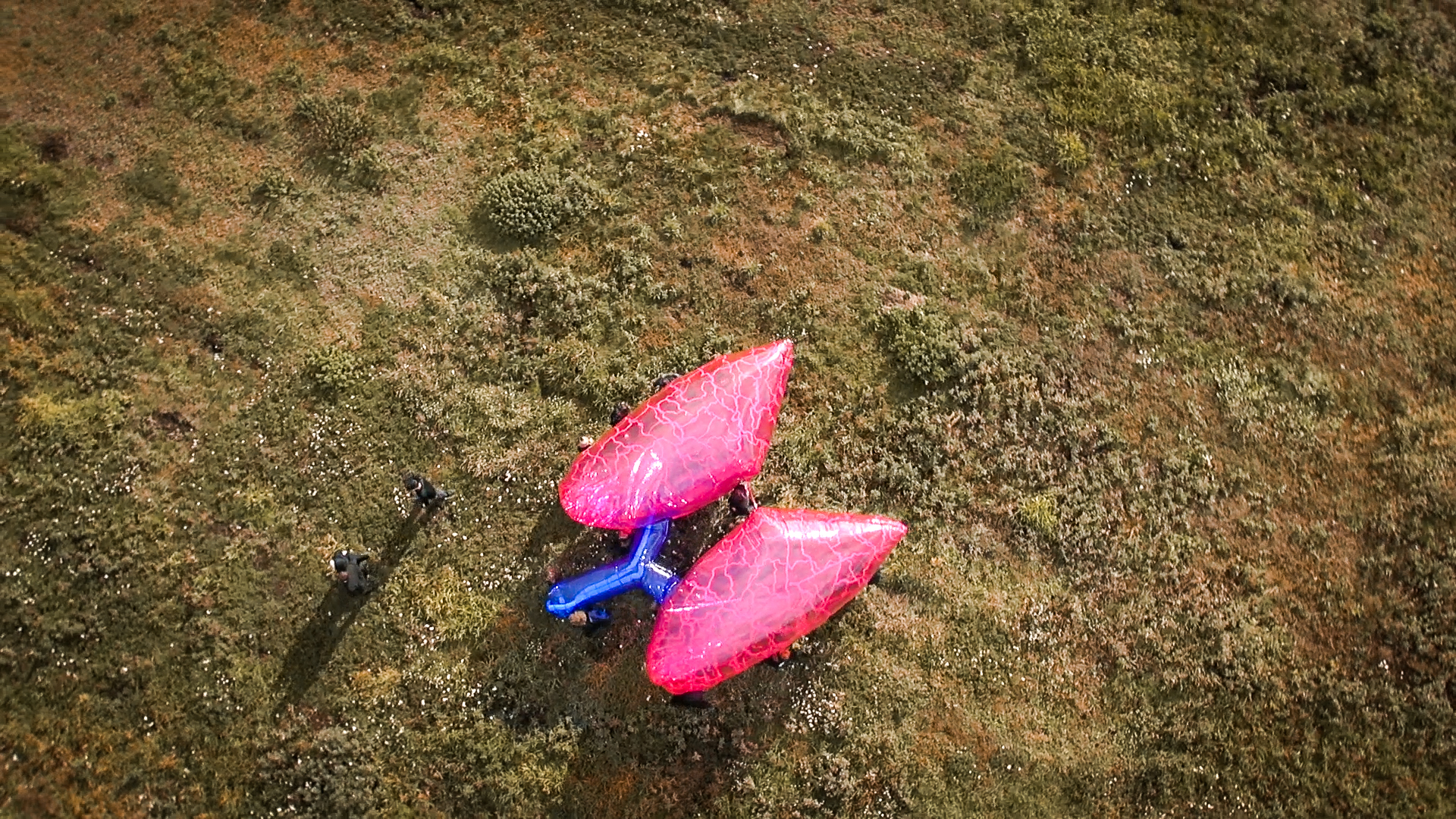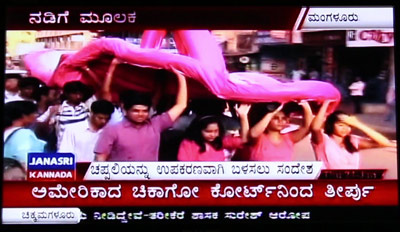20.07 - 02.09 Exhibition Barricade // IG Metall, Berlin
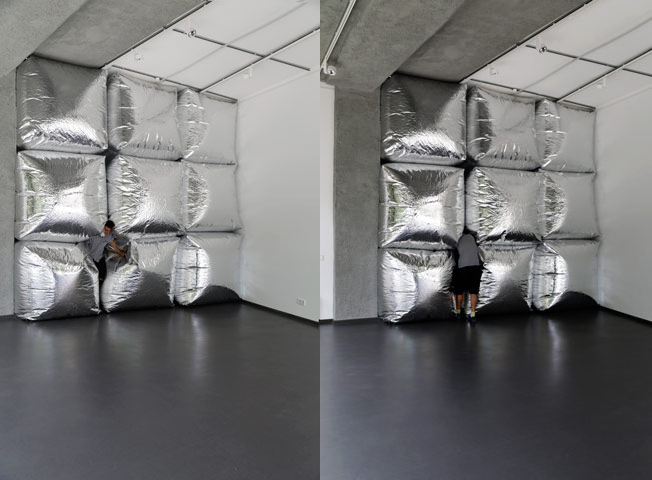
The mirror barricade is a social sculpture consisting of silver reflective inflatable cubes that can be assembled within seconds into a barricade. The playful tools for blockading roads were built by citizens of Dortmund, who positioned themselves against xenophobia and the so-called “Day of German Future” neo-Nazi rally on the 4th of June 2016.
The exhibition reflects on the process, the forming of the “social sculpture” through an installation, a video and a small publication. The installation consists of an inflatable wall that divides the room into two and serves as a semipermeable membrane. A projection shows two separate videos: the first shows the fabrication workshops and barricade trainings at schools, combined with interviews of 12-13 year old students who explain how they learned to make inflatable cubes and put them to use as a barricade. The second video shows aerial footage of a mass choreographed barricade training with more than 200 people participating, combined with film clips of the inflatables used at two counter demonstrations against the neo-Nazi march: a playful, family-friendly demonstration at Wilhelmsplatz (the square in the district Dorstfeld, what the self-proclaimed neo-Nazis call their “national liberated zone”) and the barricade at BlockaDO, the more radical demonstration that promoted nonviolent civil disobedience for blockading the neo-Nazi march. The BlockaDO demonstration was kettled in immediately after the start. The cubes became cushions and a protection barrier between angry protesters and police forces. The police response was to cut the inflatable works into pieces. Here the question arises about how to deal with neo-Nazi marches and which values are defended in our society.
A small publication designed by Studio Pandan serves as the teaser for Tools for Action’s upcoming book, with texts about the history of barricades (Tom Ullrich), an analysis of the transformative potential of play in demonstrations (Seraphine Meya) and a text describing the pedagogical aspect of the project (Helena Breidt).
The mirror barricade was initiated by Artúr van Balen / Tools for Action in cooperation with the Theatre of Dortmund. Action realised by Tools for Action (in Dortmund coordinated by Artúr van Balen, Katherine Ball, Tilly Gifford, Camille Martenot with additional support on the day of action by Dan Glass, Malcolm Kratz, Seraphine Meya and Aidan Whiteley) together with the Schauspiel Dortmund, the Municipal Integration Centre of Dortmund and the network Schools without Racism - Schools with Courage.
Exhibition from 20th of July until 2nd of September 2016.
Exhibition by Artúr van Balen
Video edit: Artúr van Balen
Video Sound: Sander Manse
Publication and graphic design by Ann Richter and Pia Christmann from Studio Pandan
Texts by Seraphine Meya, Tom Ullrich, Helena Breidt.
Exhibition curated by the Haus am Lützowplatz within the IG Metall (Metall Union).
Action realised with the Theatre of Dortmund,
Action funded by the the Dortmund Municipality for Diversity, Tolerance and Democracy, the Municipal Integration Center of Dortmund, LUSH Charity Pot, Rosa Luxembourg Foundation, the Heinrich Böll Foundation, Dortmund City Marketing and a crowdfunding campaign.
Exhibition Barricade runs from 21 July until 2 September 2016
Address:
Exhibitionspace of IG Metall (Metall Trade Union)
Alte Jakobstraße 149
10969 Berlin
Opening hours:
Monday – Thursday from 9:00 am until 6:00 pm
Friday 9:00 am until 2:30 pm
Entrance free
